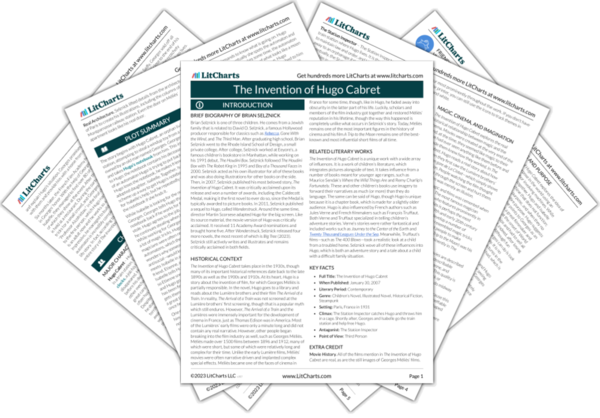The theater manager’s look implies that he knows Hugo is one of the children Etienne is helping sneak into the theater. Luckily, it turns out that, like Hugo, Isabelle is quite resourceful and gets them in anyway. For Isabelle, sneaking into the theater is not a big risk. If she gets in trouble, she will only get a stern scolding. However, Hugo worries that any trouble could mean that someone contacts the authorities, which would be very bad for him. Whether this is true remains to be seen, but, in Hugo’s mind, he is taking a big risk by sneaking into the theater with Isabelle.
